Saving California’s Beaches
New expert report offers recommendations for shoreline armoring management
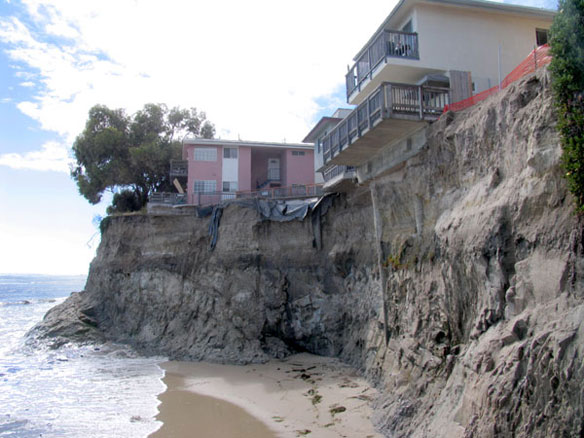
As California’s beach goers and residents well know, erosion and climate change are already impacting the California coastline. Eighty percent of California’s coast is actively eroding, and the latest science projects that sea levels may rise up to 5 additional feet along much of the coast by the end of this century. Higher sea levels threaten coastal communities with increased risk of flooding, inundation, storm damage, and erosion.
With 85 percent of Californians living or working in areas affected by sea level rise, it comes as no surprise that many property owners and government entities are interested in “armoring” the shoreline with hard-engineered structures such as seawalls and rock revetments to protect existing properties and infrastructure. Historically, hard armoring has been California’s primary response to coastal hazards. A striking one-third of the Southern California coast is now armored.
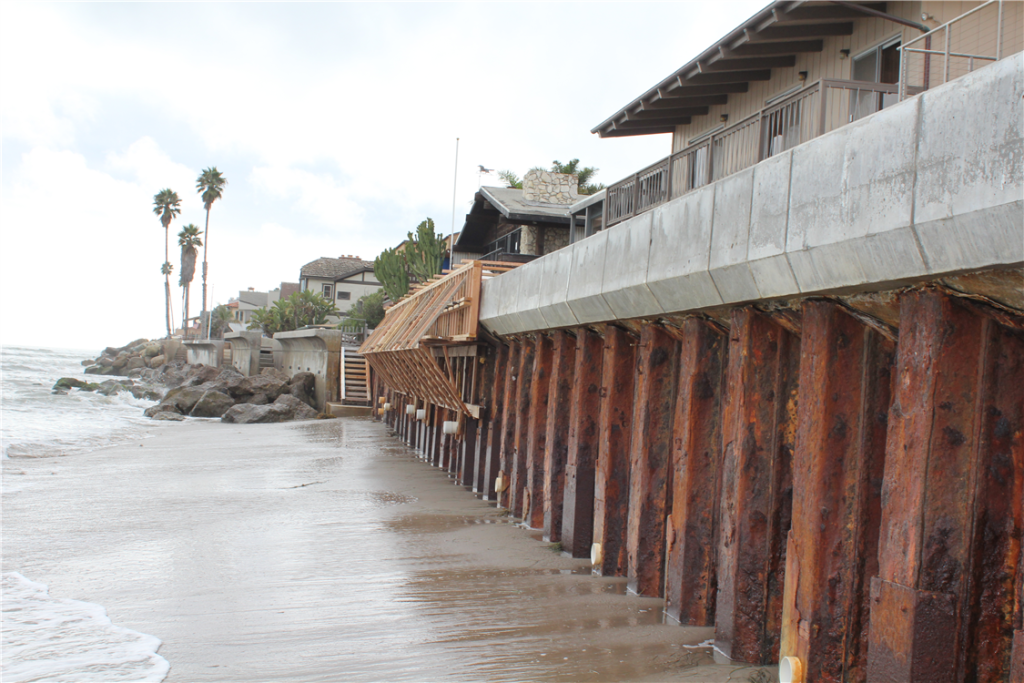
Shoreline armoring may appear to be a practical solution to protect coastal development from increased storm surges and coastal erosion; but in fact, armoring is maladaptive—over time, it actually reduces coastal resilience. Armoring accelerates the loss of eroding beaches by blocking natural bluff erosion processes, thereby reducing sand supply. Armoring also increases erosion on neighboring properties. And troublingly, armoring prevents coastal ecosystems from naturally migrating inland as sea level rises, putting California’s beloved beaches, dunes, and wetlands at risk of disappearance. Put simply, seawalls kill beaches. When placed on an eroding or retreating beach, armoring will cause that beach to narrow and eventually disappear. Beach loss means reduced public access to the ocean, fewer opportunities for recreation, loss of valuable coastal habitats, and lost revenues.
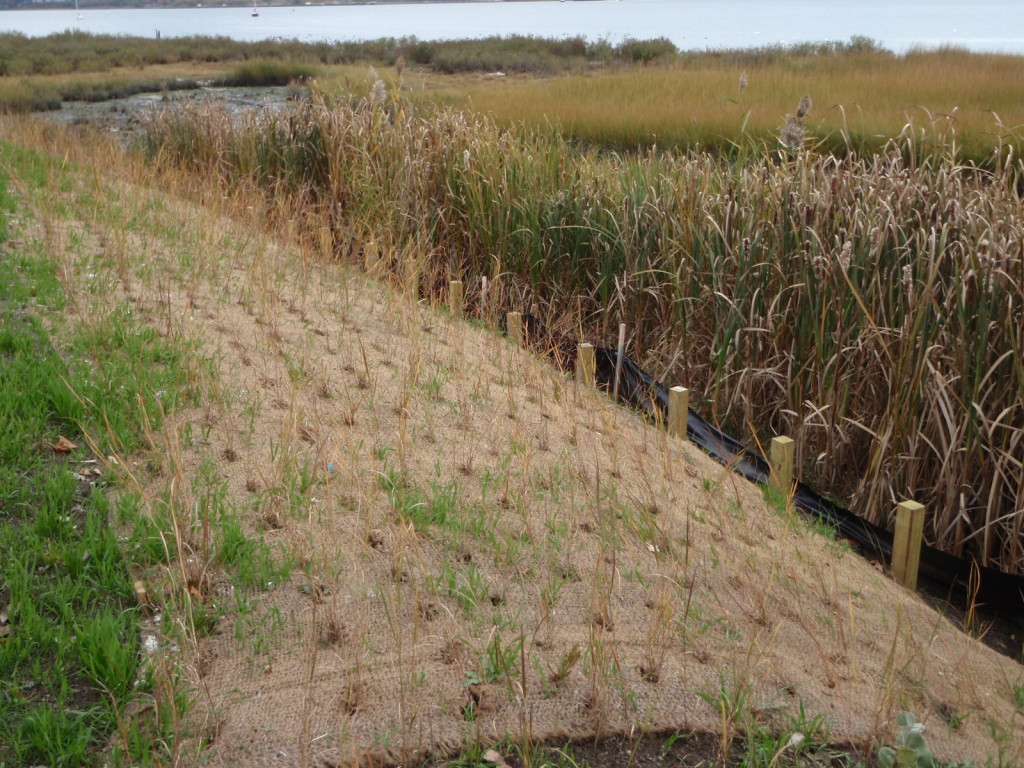
Despite a comprehensive and clear body of knowledge outlining the negative impacts of shoreline armoring, there has been a lack of attention to nature-based “green” infrastructure, “managed retreat” (relocating development away from coastal hazards while allowing natural coastal systems to migrate inland as the tide rises), and other non-armoring responses to hazards among California property owners and regulators alike. In addition to avoiding the negative impacts of hard armoring, sustainable alternatives offer benefits to coastal communities. For instance, preserved coastal systems serve as protective buffers against sea-level rise and storms, and provide recreational opportunities. Successful examples of non-armoring adaptation strategies, such as a bike path and parking lot relocation project at Surfer’s Point in Ventura, demonstrate that hard armoring need not, and should not, be our go-to response to coastal hazards.
Yet, California’s laws and policies—including a statutory mandate that the California Coastal Commission “shall” allow armoring to protect existing structures (Cal. Pub. Res. Code § 30235)—enable imprudent decision-making about coastal armoring.
New Recommendations on Managing Coastal Armoring
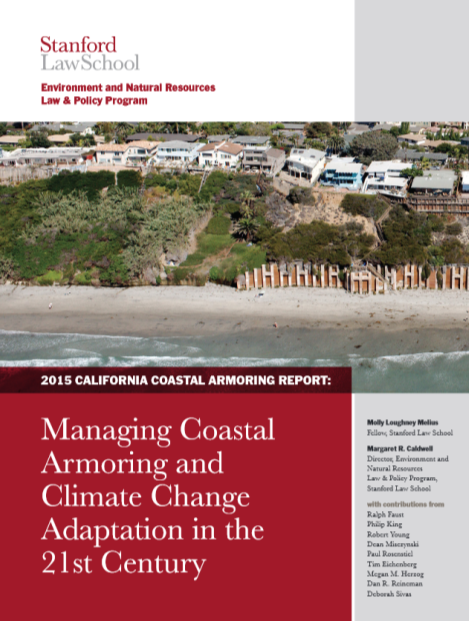 To better understand the legal and political barriers hindering strategic decisionmaking about coastal armoring, Stanford Law School recently held a series of workshops for legal, policy, and technical experts. I was fortunate to participate.
To better understand the legal and political barriers hindering strategic decisionmaking about coastal armoring, Stanford Law School recently held a series of workshops for legal, policy, and technical experts. I was fortunate to participate.
The workshop’s findings were published in a recent report, Managing Coastal Armoring and Climate Change Adaptation in the 21st Century. The report addresses how coastal decision-makers might better analyze, prevent, and mitigate shoreline armoring impacts. It also proposes strategies to eliminate institutional incentives that have led to intense coastal development and maladaptive responses to coastal changes.
Key recommendations—broken down in detail in the report—include:
1) Advancing stronger statewide laws, policies, and funding mechanisms that discourage armoring and encourage non-armoring responses to erosion, sea-level rise, and other coastal hazards. E.g.:
- Resolving conflicts in the California Coastal Act in a way that is most protective of significant coastal resources.
- Clarifying the term “existing” in §30235 to refer to structures existing at the time the Coastal Act was adopted.
- Limiting the availability of emergency seawall permits.
- Improving environmental impact analyses of coastal armoring structures.
- Strengthening the California Coastal Commission’s enforcement authorities to address unlawful armoring structures.
2) Ensuring local governments have incentives and resources to incorporate sustainable adaptation strategies into local policies and discourage armoring.
3) Supporting development and implementation of insurance programs, regulations, and other measures that require and/or incentivize private property owners to assume the risks of developing in, and ultimately relocating out of, hazardous areas.
4) Where appropriate, pursuing non-armoring responses to coastal hazards, such as natural protective infrastructure and managed retreat.
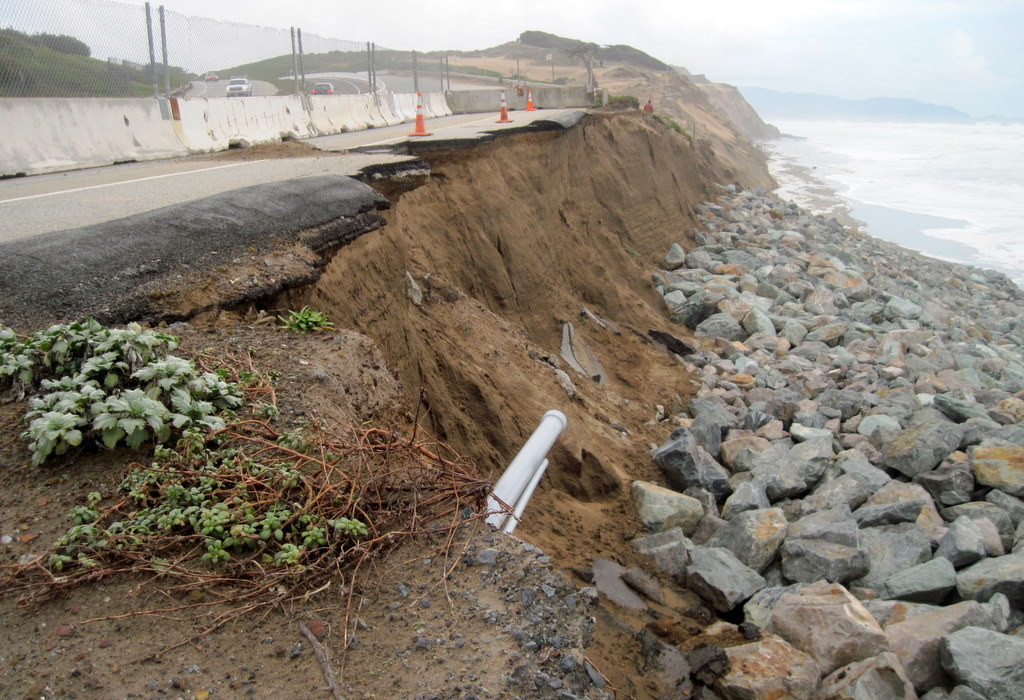
Next Steps
To preserve California’s iconic beaches, the legislature, state regulators, and local coastal managers should take swift action to better manage shoreline armoring. The current ad hoc approach to armoring California’s coast is not sustainable in the face of sea-level rise. More thoughtful management, planning, and consideration of non-armoring alternatives is essential to preserve California’s valuable coastal resources.
Later this year, the California Supreme Court will hear an important case reviewing the Coastal Commission’s authority to regulate and restrict seawall permits—Lynch v. California Coastal Commission. Hopefully, the outcome of this case and subsequent agency decisions will shape the future of California’s coast in a way that benefits coastal communities, natural systems, and public access.
For further reading, see: California Coastal Armoring Report: Managing Coastal Armoring and Climate Change Adaptation in the 21st Century.
Reader Comments
One Reply to “Saving California’s Beaches”
Comments are closed.






Once California’s high speed rail is up and running, and cap n’ trade takes effect, then this will reduce carbon dioxide emissions, mitigate climate change, and stabilize sea level – problem solved. That was easy.